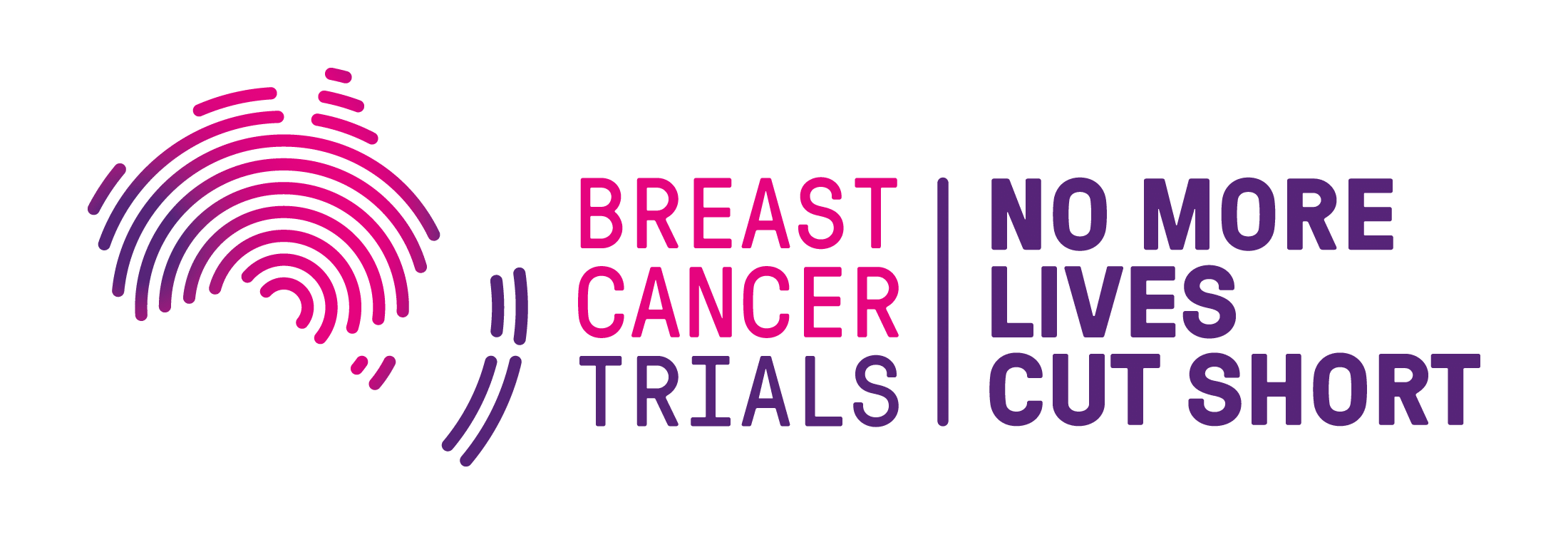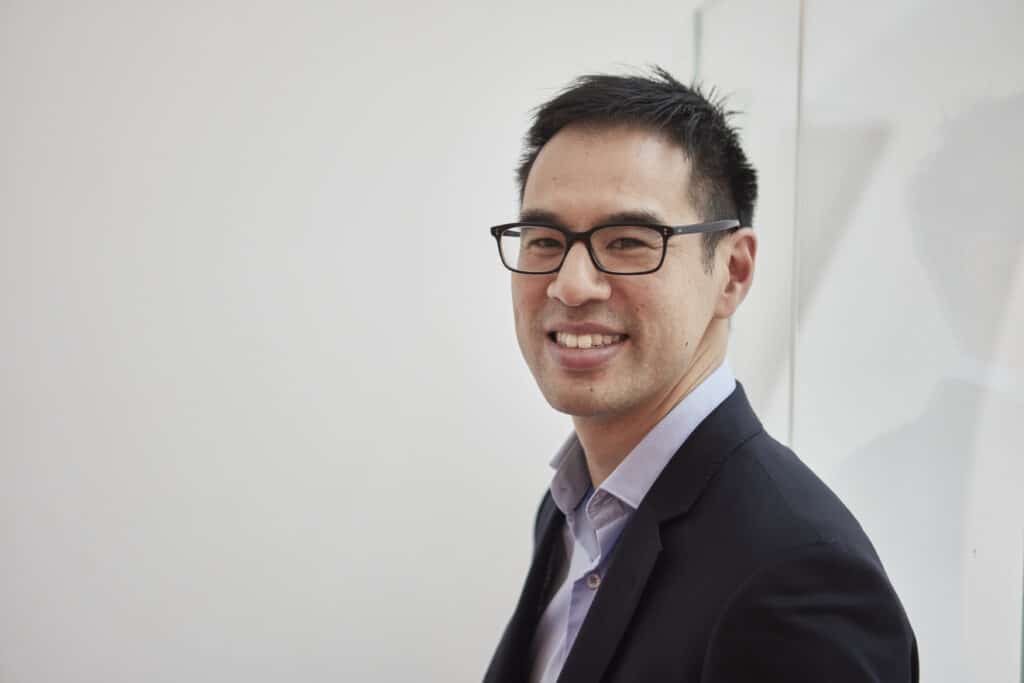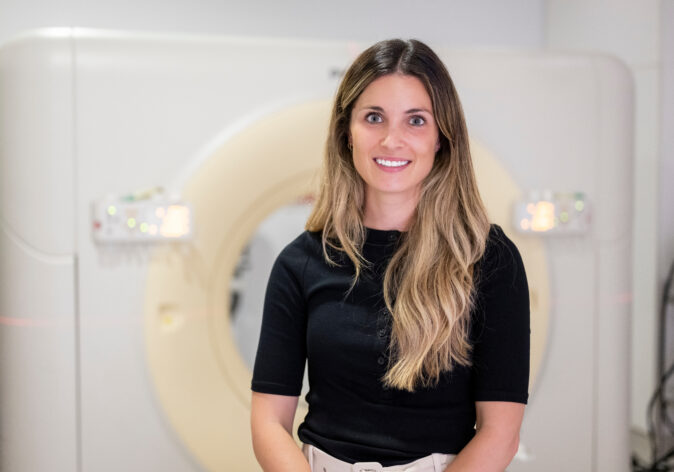Breast Cancer Trials is dedicated to finding new and better treatments and prevention strategies for people affected by breast cancer. OLIO is an immunotherapy clinical trial which is examining whether the addition of a Olaparib to standard chemotherapy with or without durvalumab will improve outcomes for young premenopausal women with high-risk early breast cancer.
Dr Stephen Luen is the study chair of the OLIO clinical trial and we spoke to him about the aim of this research, how it might improve patient outcomes, and his hopes for the future of breast cancer research.
“So, recently we published some data looking at a very young women with hormone receptor positive breast cancer to try to understand what features in their breast cancers might give clues as to why their cancers may be more aggressive or have a higher chance of recurrence. And based on those findings, we’ve proceeded with a trial concept to try to add in targeted therapies for a subgroup of these tumors to improve their outcome.”
What is the aim of the OLIO clinical trial?
“So, we know that in hormone receptor positive breast cancer in young women, that they can have an elevated risk of recurrence, up to two to three times that of older patients. And the aim here is to target particular features of the tumor, and in this case, that’s called homologous recombination deficiency, with treatments that are dedicated to targeting those pathways to improve the chance that when we do an operation there is no tumor left over, but also to improve the outcomes in terms of the chance of cure to prevent recurrence.”
“So the aim of this trial is to develop the optimal treatment pathway for these patients to improve their chance of cure.”
Listen to the Podcast
Dr Stephen Luen is the study chair of the OLIO clinical trial and we spoke to him about the aim of this research, how it might improve patient outcomes, and his hopes for the future of breast cancer research.
How prevalent is HR-positive breast cancer?
“Yeah, that’s a good question. So, hormone receptor positive, HER2 negative breast cancer is the most common breast cancer subtype of all breast cancers that we diagnose. It makes up about 70 percent of cancers. However, the typical hormone receptor positive breast cancer is in post-menopausal women and older women. So, it is quite unusual for a young woman to develop breast cancers that are hormone receptor positive, HER2 negative.”
“And for this reason, we’ve investigated this more closely, and with the elevated risk we wanted to identify why these patients are getting cancer, but also how to best treat them.”
Why might young women with HR-positive breast cancer have higher rates of recurrence?
“So, it’s not totally clear why these tumors have a higher rate of recurrence. There are a couple of things that we do know. So, when we look under the microscope at features that show how aggressive the cancer is, in other words, how rapidly we think that cancer is growing, in young women we can see that they have much more aggressive cancers than their older counterparts.”
“There may be several reasons for that. We imagine that homologous recombination deficiency leads to a situation that is called genomic instability, where you accumulate more changes in the DNA of the tumor that can make the cancer more aggressive. There are also other features, so for example, young women may have higher levels of estrogen compared with postmenopausal women, and because these breast cancers are driven by hormones, it may be that in that situation they have more aggressive features.”
“In patients who have homologous recombination deficiency, there is some defect in the body’s ability to repair DNA changes. When we give a Olaparib, which is a class of drug called a PARP Inhibitor, it further decreases the ability to repair DNA. And when this occurs, you can get a massive accumulation of changes in the DNA of the cell, which causes that cell to die because it cannot cope with that level of DNA damage.”
“So, this is how the Olaparib drug works in this situation, and we think it probably works even better or synergizes with chemotherapy which causes cell death through its usual pathways.”
“I have a strong belief that we should be doing clinical trials directed to specific ‘at need’ populations, and one of those is young women with breast cancer. We know from literature that they have a high risk of recurrence, but they also have several other needs that are unique to young people, and it’s always been my dream to develop a clinical trial in this setting.”
What role does the immune system play in trying to make a treatment more effective?
“So my lab and other people around the world have spent a lot of time investigating the immune system and its interaction with cancers, particularly breast cancer. And our lab has done a lot of work at looking at quantity of immune cells within a tumor itself, which is kind of like a surrogate marker for that interaction between the patient and the tumor.”
“And we know that there are subtypes of breast cancer that are much more visible to the immune system. So, for example, triple negative breast cancer is known to be more visible to the immune system and, indeed, we’ve seen some positive results with adding immunotherapy in this subtype.”
“There seems to be less of a role in hormone receptor positive tumors, however, based on some of the research we’ve done, we believe there is a subset of these tumors that do have a stronger interaction with the immune system. And part of what we’d really like to do here is identify which of those tumors have that robust immune sort of interaction, and whether we can then target that group with drugs that allow the immune system to be fully unleashed.”
“So, the OLIO clinical trial is looking to recruit a total of 56 patients, and the patients that are eligible are patients who are young, so aged less than 45 years, and they have hormone receptor positive, HER2 negative breast cancer that is deemed to be high risk. And they are going to undergo treatment with chemotherapy in what we call the neoadjuvant setting, which is chemotherapy before surgery.”
“To be eligible for the trial, patients can be recruited for something we call a prescreening, which involves simply doing a genetic test on the tumor to see if this feature we call homologous recombination deficiency is present. And if it is present, they then may be eligible to proceed with the full trial with the intervention.”
“I believe with the advent of new therapeutics; we’re really looking at using targeted drugs to improve the outcomes in particular subsets of patients. So, I think for the future what I’d really like to see is to be able to understand which subgroups are going to respond to these treatments so that we can really optimize their outcomes at a personalized treatment kind of level.”
“I’m super excited to be able to be given the opportunity to run a clinical trial like OLIO. And clearly for me, I strongly feel that this would not have been possible without the support of Breast Cancer Trials and so I’d really encourage anyone who’s considering supporting Breast Cancer Trials at all to strongly consider it, because it really helps to support important clinical trials that are run within Australia and New Zealand for our own patients. And so, it’s an exciting time to be involved in that sort of research.”
What are your hopes for the future?
“So, I think my hopes for this clinical trial, obviously, are that we see some positive results. If this is positive, I feel strongly that we should look to do a larger, what we call a registrational study, and that will enable this treatment to be fully accessible and available to the general public so that we can identify these high-risk individuals, particularly young patients, and we can treat them with the best possible treatment.”
Our life-saving breast cancer research is only possible thanks to the continued generosity of our supporters. Please help continue this vital work by making a donation today.
Support Us
Help us to change lives through breast cancer clinical trials research



